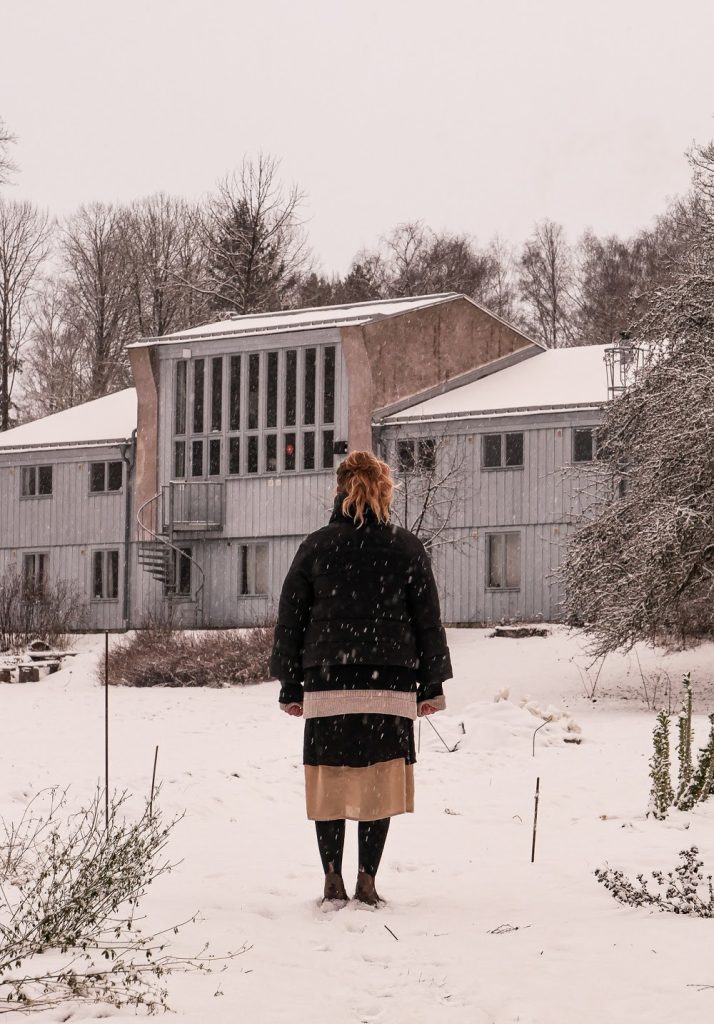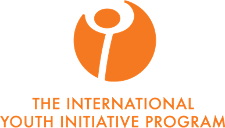Dear Friends of YIP,
I’m writing this overlooking the white fields and fairy tale-like frosty trees. December has been a very dark and cold month. A full, rainy week went by in which the sun did not show himself a single time. Icy winds blew through Järna that made you never want to leave the house again. But it has also been a month with many sparks of light and warmth: spectacularly beautiful skies, ice skating fun, Sankta Lucia, and as the icing on the cake, the storytelling feast.
With the start of the winter break we are wrapping up the Inner Awareness Block. In this newsletter you get a peek into Agustina’s mind during the Portrait Painting course. Nell shares her challenges and highlights of the Power, Privilege and Oppression course. Anna reflects on her experience of The Liberated Voice. Seoyoung tells her story of the Storytelling week.
After the break Dr. Vandana Shiva and Dr. Campbell-McBride will kickstart the Collaboration and Community Dynamics Block with an open course on Biodiversity, Food Sovereignty and Regeneration. Below you can find some invitations regarding their visit to YIP.
For now we wish you all a very Merry Christmas and a beautiful 2023. See you in the new year!
Warmly,
Tessa
In this newsletter you will find:
– Portrait Painting written by Agustina Marchi-Perez
– Power, Privillage and Oppression written by Nell Lenoir
– The Liberated Voice written by Anna Noer
– The Art of Storytelling written by Kenzie Keeler
– Invitations for the open course with Dr. Vandana Shiva and Dr. Natasha Campbell-McBride
Portrait Painting
– with Rachel Ingvad –

Choose a canvas, two paint brushes and four colors and cover your canvas.
With two colors, mark the light and the shadows on your face.
How are the shadows marked? Is the light everywhere? So, the darkness too?
How do I make this shadow show up as a shadow and not as a potato in the middle of my face?
We gather in a circle and observe all the different paintings. What do we see?
Colors, shapes, diversity.
Paint from the inside of your face out.
My face looks flat, not three dimensional. How can I give it more depth? Is it the lights and shadows? How can I paint more contrast? What colors do I have to mix?
I don’t understand. I try various things, but I get the same result. The painting doesn’t look like my face.
We gather back in a circle and observe everyone’s painting. What can we see? What has changed? We give our partner feedback. How do we take criticism? Do we get angry or do we try to see what our partner tells us? Why do we cling so much to the final product?
Continue painting, ask your peers for advice. By the end of the week I hope I’ve made myself unnecessary.
I like the colors I make, but I don’t know how to proceed. How nice what the others are painting. So beautiful how my partner played with light and shadow. How did they do it? Wow what a progress.
We gather in a circle and see everyone’s paintings. What do we observe? Do we see faces yet? Can we tell who is who?
Let’s continue painting and remind ourselves that a challenging moment gives you the opportunity to create something new.
If I keep going, I’ll break the painting, I’ll hit it. I’d better take some distance from my painting and breathe in some fresh air and then I can come back to paint.
Ok, now I can come back. I ask around, how did you mix that color? How did you create that texture? That shape? What do you think my face is missing? How can I improve?
Luckily the other Yippies are here and we help each other.
We gather and observe, what do we see? Do we see faces yet? Can we distinguish who is who?
What do we need to be able to continue?
Let’s go back to painting and remember to ask your peers for help.
Well, I already tried everything I know and it’s not working that much. I’m going to follow the advice of my peers. I don’t know if it will work, but it doesn’t matter, it can’t get worse and if I “ruin” my painting, I’m sure I can restore it somehow. In the end it’s just a painting, what does it matter if it’s “bad”?
Finally, my painting is getting a little bit more shaped. I like it better. It no longer matters that it is not “perfect”. I like it the way it is. I am enjoying the process.
And how nice what the others achieve with their paintings. It is beautiful.
by Agustina Marchi-Perez




Power, Privilege & Oppression
– with Esmée Begemann, Michael Chiunda, Lina Ashour and Didintle Ntsie –
“There are things we know that we know.
There are things we know that we don’t know.
There are things we don’t know that we don’t know”
The Power, Privilege and Oppression course is over, and yet these words still echo in my mind.
This course offered the opportunity to shed light on a variety of topics that are often avoided or tabooed in mainstream societies because they make people feel ‘uncomfortable.’ Yet, as the contributors discussed with us: “Comfort is not a right. We should step into discomfort.” Discomfort became a central topic in our group. As divergent opinions arose, the connections tensed between us and the polarities increased. The discomfort melted into the room and leaked into our insecurities.
Yet, it is from these beautiful polarities that communication can be trained and experienced. What matters in the end—what matters to me at least—is to learn together. I may have disagreed with some of my fellow Yippies, but I believe that it is important to hear all the voices of people’s stories. As well as their experiences and reactions when confronted to the topics brought up in PPO. I want to listen and understand why—why do some of us feel attacked, guilty, and defensive? I want to hear why—why do some of us feel unheard, marginalized, and concerned? I want to hear it all, because it is only when I understand the others that I can emphasize with them and that we can move forward—together. And I hope, I truly do, that each of them will do the same with me.
As the discomfort overflowed through the windows of our room, the question of defining and understanding what privilege meant floated above us. The question spiraled in my head as the answer seemed obvious to me, yet I couldn’t get it formulated into words. I closed my eyes and let myself be taken by the flow of the current… leading to a cliff.
Two people arrive in front of a cliff. They both have to go up that same cliff and face similar difficulties on their route. But one of them is given climbing gear even before they started their ascent. Once they start climbing, the one with the tools has the unfair advantage to climb more easily—yet still facing difficulties and struggles on the route. The second one has to face similar issues, but contrary to the first, does not have the climbing gear to rise up.
The current led me to this metaphor of what privilege means to me—acknowledging that I don’t know what I don’t know on the topic. The society we live in is the one giving the tools. An individual does not choose to have them and for the other to not have them—but the reality is there: they have the tools. The systems we live in are the ones that give unfair and unequal treatment to marginalized and privileged groups. And shedding light on the institutions, norms, and implicit biases that reinforce them can help to unlearn and reform how we relate to each other and sail towards a fairer and more inclusive place to live in—together.
From this liquid experience, many questions remain… How can we use these tools? How can I learn to be an ally in that endeavor and how can I support people to be a good ally to me? How can I use my voice to make my circles and society a more inclusive place?
by Nell Lenoir
The Liberated Voice
– with Kefas Berlin –
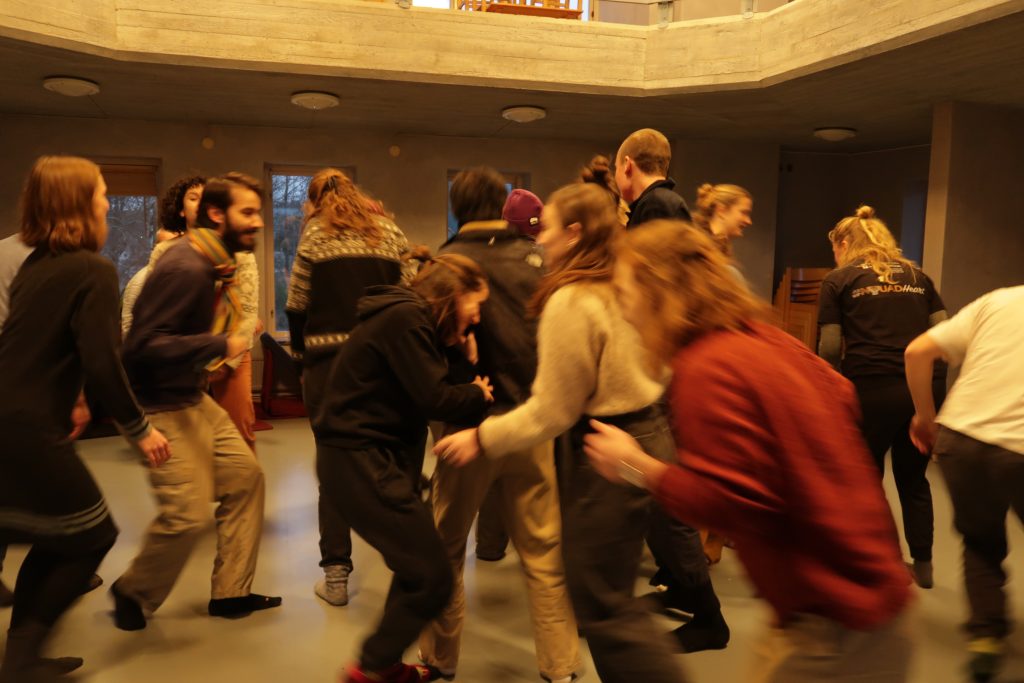
As we now skate around on the frozen ponds that surround us, an apropos metaphor for how I imagined I might find myself during the week of “The Liberated Voice” with Kefas Berlin would be that of Bambi on ice. As it turns out, however, awkwardness and intimidation would not hinder me in this seemingly comfort killing course.
After the morning PPO course, most of us were with heavy thoughts and vulnerable hearts but we would soon come to find the needed catharsis and happy brain chemicals with Kefas. As eclectic (and wondrously and refreshingly eccentric) as Kefas is, no sheet music, fine-tuning or actual teaching were part of this week. Play, physical contact and sensing, however, were pillars in what to me became about, more than liberating the voice, freeing my whole being.
Mostly, we use our voice unconsciously, not with the intention of growth and transformation. We are all, nonetheless, wind instruments and we participate in the world, in our undeniably vibrational world, through sound making. Traditionally, all cultures probably had something like chanting at its core. Apparently Darwin talked about our ancestors singing love songs to each other before we could articulate speech. Silencing ourselves as a form of sophistication is what I come to wonder and ponder. Especially music has become professionalized, less inclusive, but don’t we all have a unique voice and sonic expression to share. Kefas’ approach stands as an antithesis, a remedy to our current over-civilized and UNenchanted reality.
Moment after moment, I found myself smiling from head to toe, when in rhythmical bodily movement, or tapping a friend’s back to manipulate their voice. Or, when with closed eyes we moved amongst each other while humming in spontaneous pitches, like a murmuration as we turned to other senses to navigate.
I see now that many of the exercises served to bypass the overthinking brain and rely, or awaken, a more instinctual response. We built trust in ourselves, in an innate knowing. Trust in each other too – when the djembe drum was spontaneously brought out, the tribal or community feeling was amplified.
Being in tune with each other and with one’s mind and body was also the theme when we were introduced to tuning as a vagus nerve exercise. It turns out that singing and humming stimulates the nerve that is implicated in all sorts of healthy parasympathetic activity. The effect of sound on matter was an intriguing topic that was very clearly demonstrated when Kefas put some sort of tuning fork on someone’s back and the person subjected to the vibrations described how it felt in the body. Sound really is something so fundamental. Using the voice intentionally and listening to those sounds are such a reliable source of presencing, and how to be present is the perpetual challenge for every human and where individual as well as collective healing happens. In ageless sounds and rhythms, I found something so unusual but so uncannily familiar. Instead of leaving me struggling like Bambi on ice, there was a sense of coming home.
by Anna Noer
The Art of Storytelling
– with Roi Gal-Or –
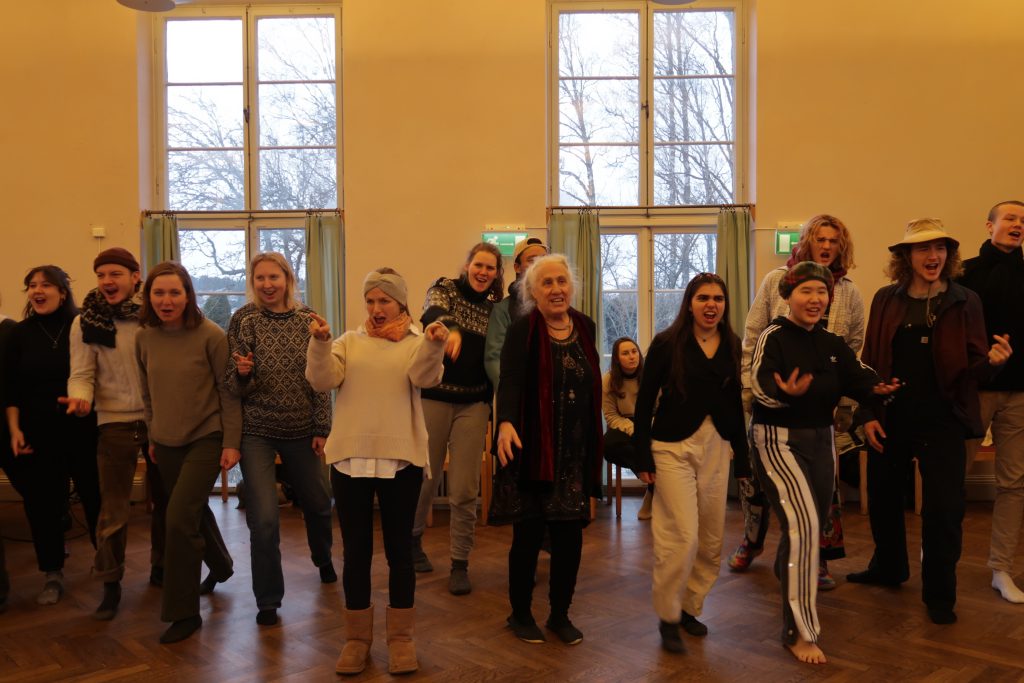
What power does a story hold?
I think many of us pondered this question going into the week. When Roi flew in on the frozen winds of England with his pom-pom slippers and twinkling eyes I knew we were in for quite an adventure together. So what power does a story have? After a week of jumping into stories, both listening and bravely performing, I feel as though the answer to this must lie in the way my chest pounded when Flynn beat her drum, telling the ancient story on Inanna, or the tears of laughter from Elias’s rendition of, ‘A Girl Who Became A Boy’. Or does the power of a story lie in the storyteller? The richness and joy I received when I got to tell a story is one beyond comparison. I think back to each precious tale that Roi shared with us, as if with each he was gifting us yippies with precious jewels. I will never forget the tears that streamed down the cheeks of those who listened and the empowerment that spread between us with the realization that stories can transform the world. So I can’t help feeling that the answer to my question can only be found in the hearts of those lucky enough to hear those magic words, “once upon a time”.
by Kenzie Keeler
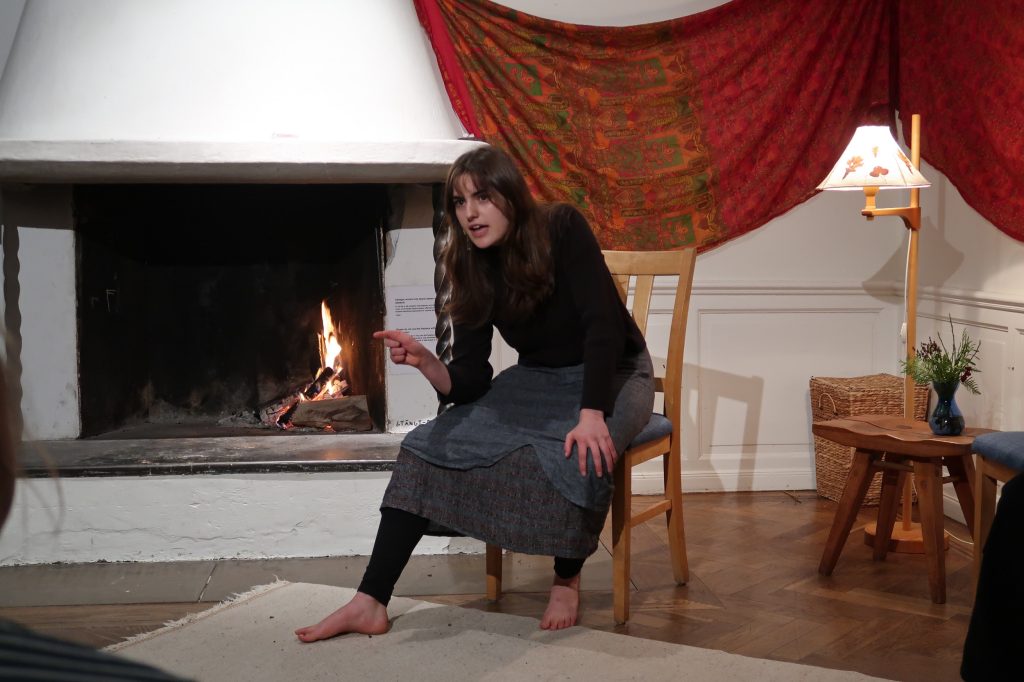
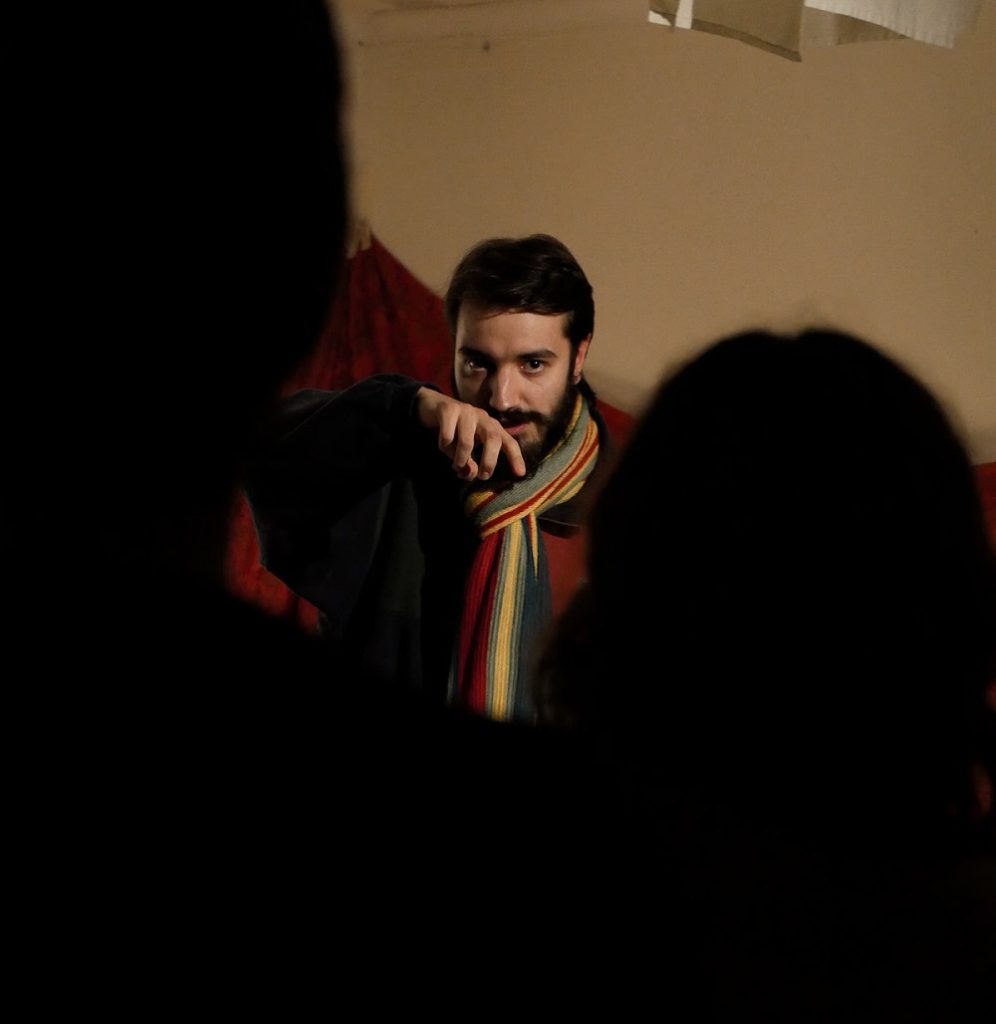
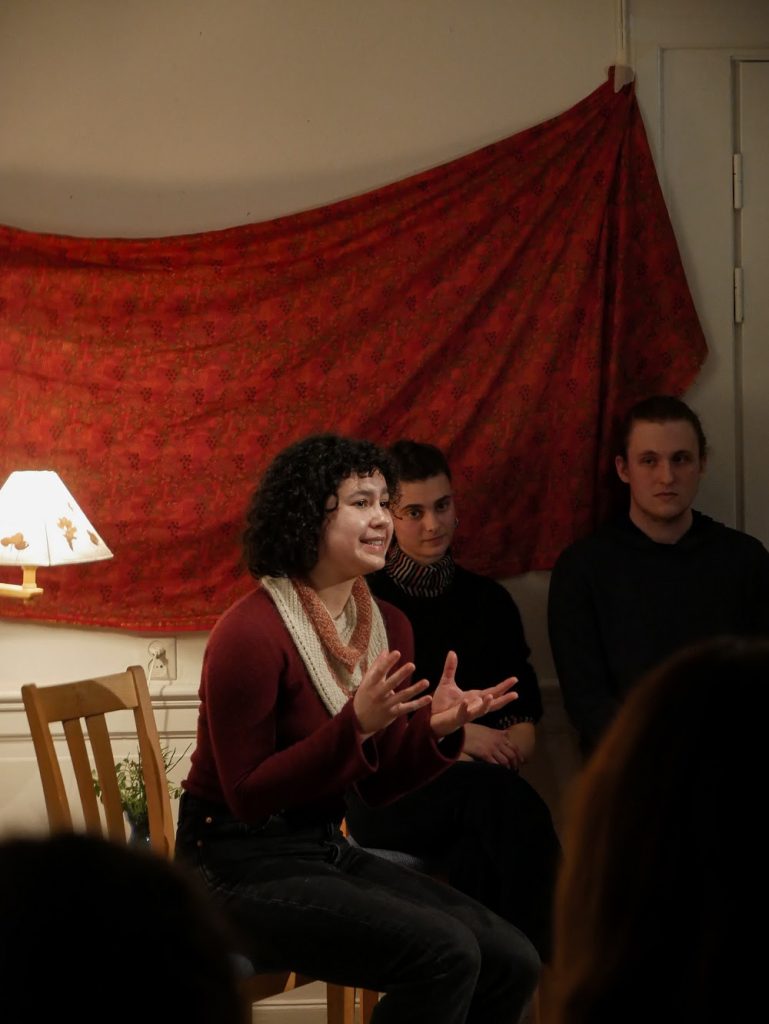
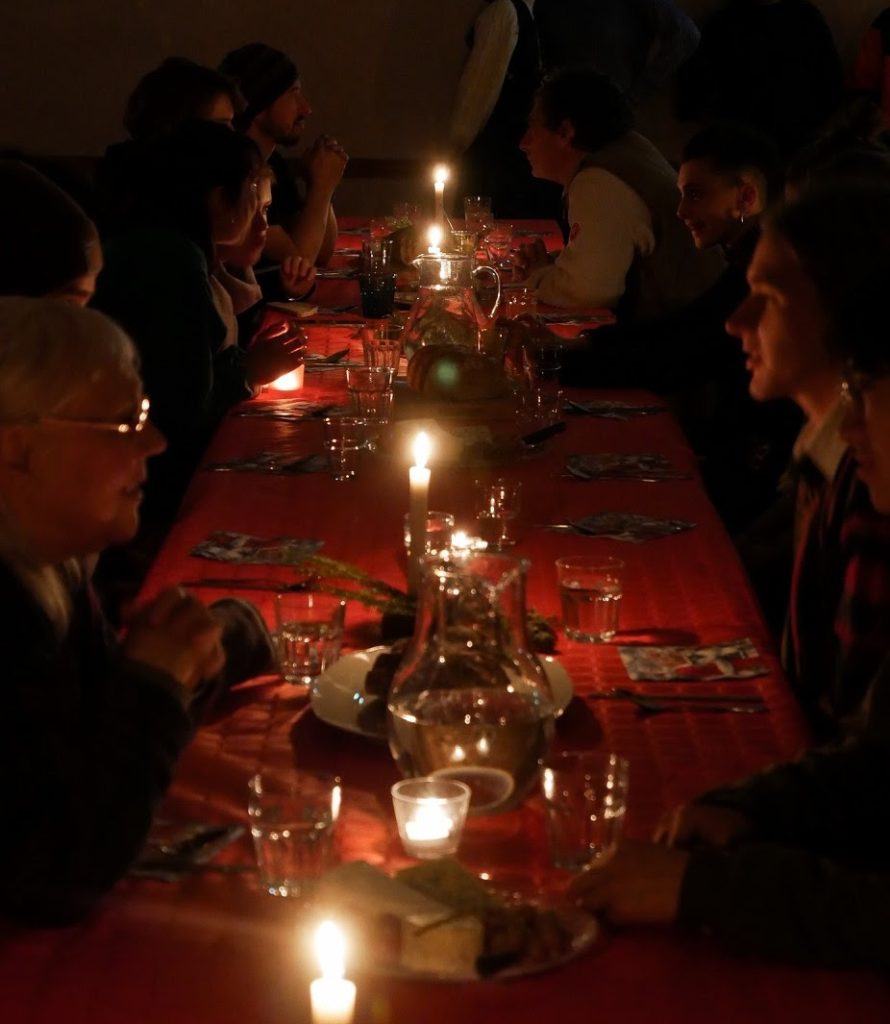
Invitations
We are happy to share some invitations with you. As mentioned, Dr. Vandana Shiva is coming to YIP and we would love for her to be able to share her wisdom with you too! You can join the screening of the Seeds of Vandana Shiva, the Public Talk and/or the open course. See below for more details.
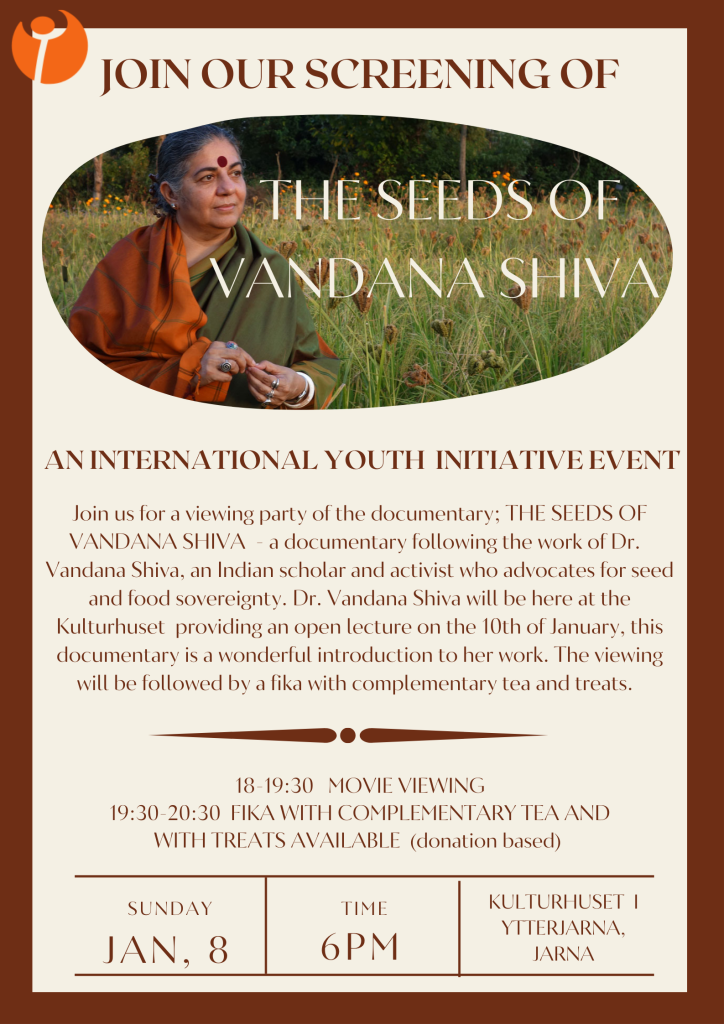
Join us in the evening of January 8 for a screening party of THE SEEDS OF VANDANA SHIVA – A documentary following the work of Dr. Vandana Shiva, an Indian scholar and activist who advocates for seed and food sovereignty. Watching this documentary is part of our preparation for Dr. Shiva’s arrival in Ytterjärna in the week that follows. There is no sign up needed, just feel free to walk in and join us.
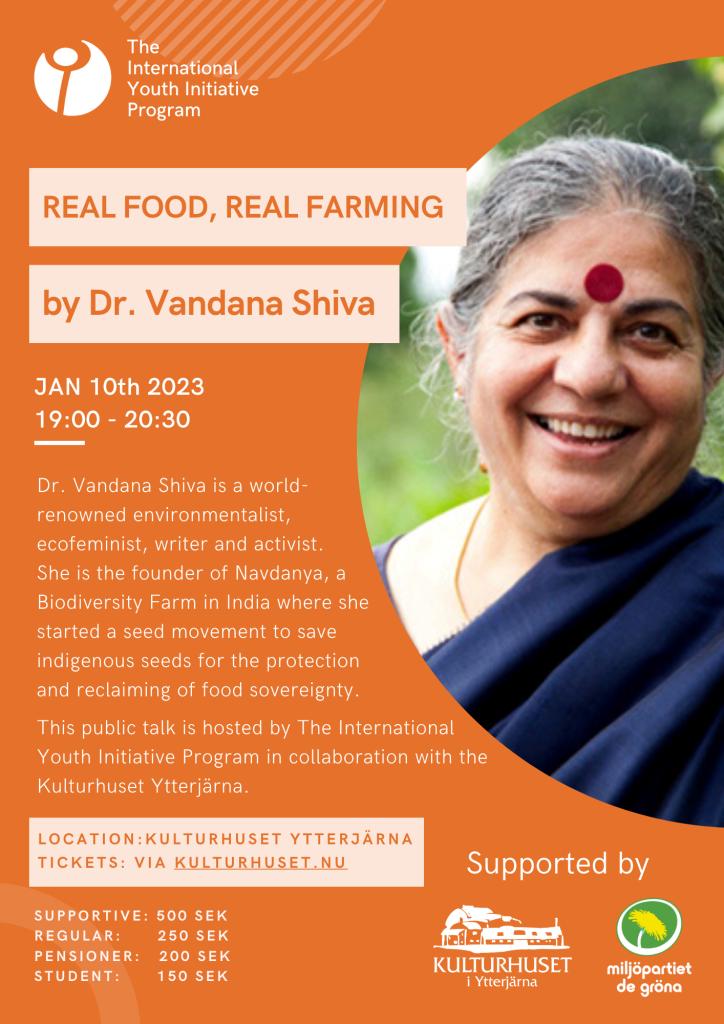
On Tuesday the 10th of January, Dr. Vandana Shiva will give a public lecture on the main stage of the Kulturhuset. She will talk about REAL FARMING, REAL FOOD. You can buy your tickets via the this link.

We are delighted to invite you to our open course on Biodiversity, Food Sovereignty and Regeneration with Dr. Vandana Shiva and Dr. Natasha Campbell-McBride.
Dr. Vandana Shiva is a world-renowned environmentalist, ecofeminist, writer and activist. Dr. Shiva is the founder of Navdanya, a Biodiversity Farm in India where she started a seed movement to save indigenous seeds for the protection and reclaiming of food sovereignty.
Dr. Natasha Campbell-McBride studied the relationship between neurological disorders and nutrition. Dr. McBride will share her knowledge about the microbiome of humans, soil and planet. She will cover the GAPS program, vegetarianism/veganism from the angles of health and ethics and she will share her personal experience as an organic farmer.
The course will take place from January 9th until January 13th. Please look at our website if you are interested in joing the course. We have limited spaces available so don’t wait too long to reach out 🙂
Applications for YIP16 are Open!

We are excited to announce that applications for the 16th edition of YIP (2023-2024) are now open! Thank you to those of you who have been waiting patiently.
For the applications, we have two rounds of intake: if you would like to be considered for the first round, please submit your application by March 15th 2023. We strongly encourage especially those who need a VISA to apply as soon as possible as it can take time to process.
If you have any questions, please feel free to email [email protected]
We look forward to receiving your applications!
Kindly,
YIP Organising Team
— MESSAGE FROM YIP15 —

Would you like to support the YIP15 participants in their internship fundraising? Purchase an OPEN HEART MAGAZINE!
The digital OPEN HEART MAGAZINE is a collection of the YIP15 participants’ artistic creations. Its source was sparked in the mind and heart of a participant of the Youth Initiative Program (YIP) in Sweden. Creating and receiving art can become a shared experience allowing people to connect to their inner selves, emotions, and each other. We believe that everyone should have the space to create and share their art with the outside world.
The initiative of this magazine stems from the admiration of our fellow Yippies’ (YIP participants) artistic creations that took shape during our daily life at YIP. The intention was to collect and to match visual art and written words together and to display them in one single magazine. The OPEN HEART MAGAZINE is solely the harvest of Yippies’ art creations.
By purchasing this digital magazine, you contribute to our fundraising aiming to cover the cost of travel and accommodation for our internships. From March 14th to April 14th 2023, we will be working with organizations and initiatives in India, Nepal, Bulgaria, the US, Senegal, Lithuania, South Africa, Egypt, and Zimbabwe that practice societal entrepreneurship in the realms of social, educational, agricultural, and environmental change.
As this online magazine is part of our fundraising project, you can choose to support us with 3 price options:
1. 15€ / 160SEK – Budget-friendly price
2. 25€ / 270SEK – Suggested price
3. 40€ / 440SEK – Supportive price
You can find the link to the order form here.
In the Next Newsletter you will find:
– Biodiversity, Food Sovereignty and Regeneration
– Dialogue and Group Dynamics
– Action-Based Prototyping
– Slava Theatre
